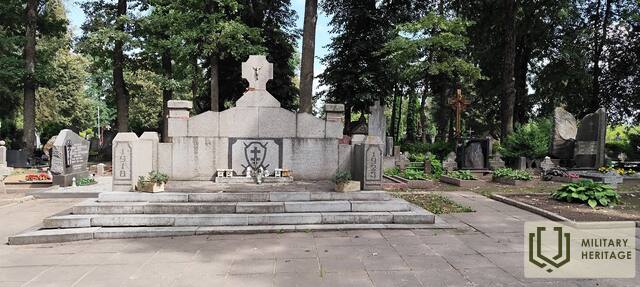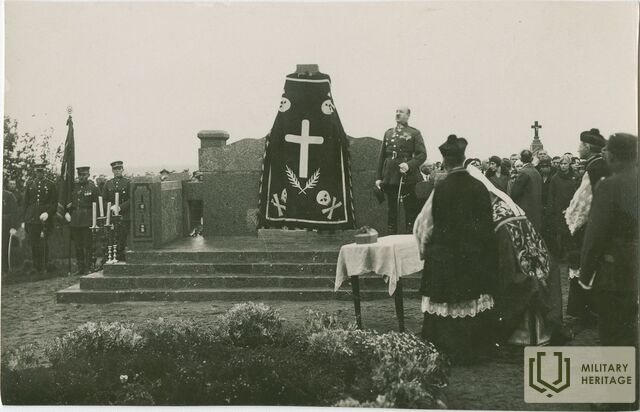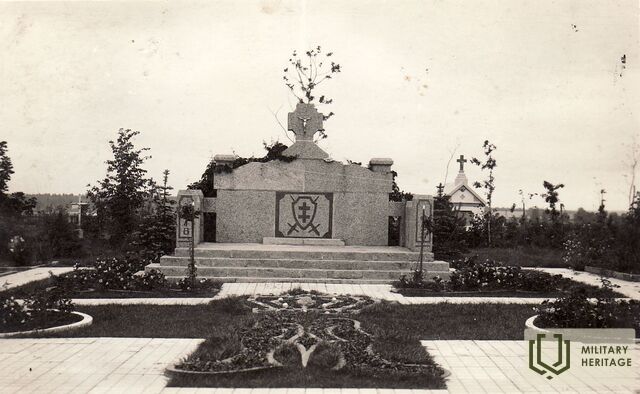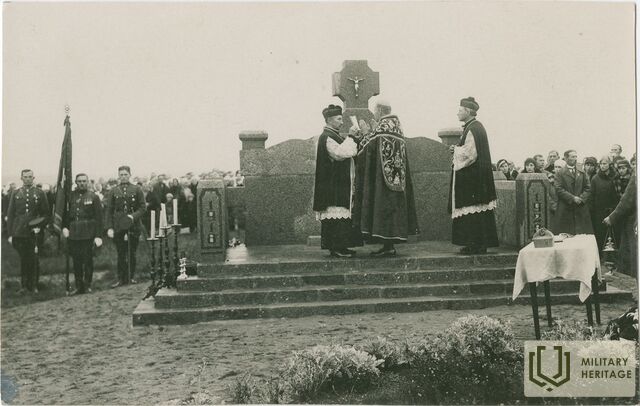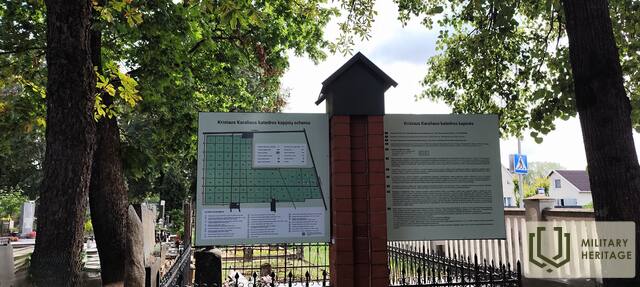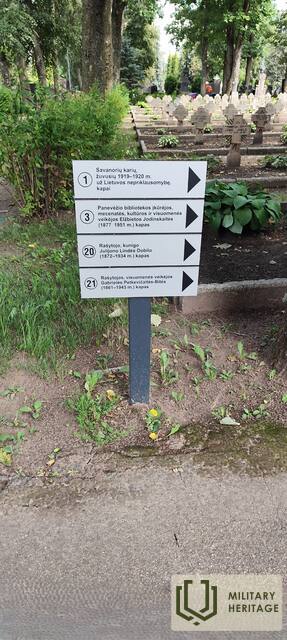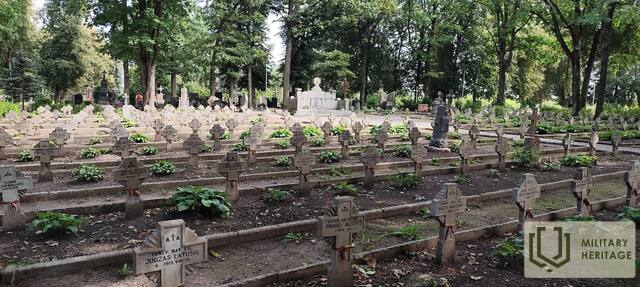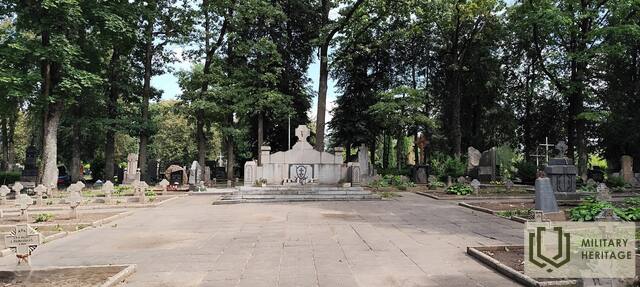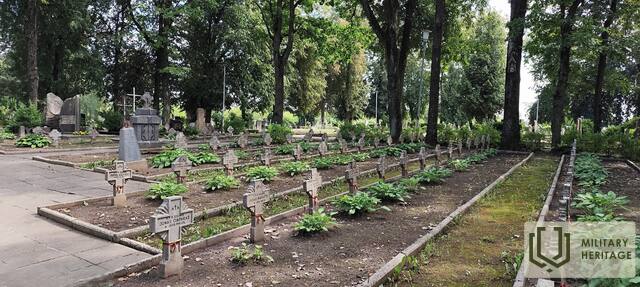Graves of volunteer soldiers who died in 1919-1920 for the independence of Lithuania, in Panevėžys
Memorial site

In the city of Panevėžys.
About 200 soldiers who died for the freedom of Lithuania are buried in the Panevėžys cemetery. In order to perpetuate their memory, it was decided to erect a monument in 1929. For this purpose, a monument construction committee was formed, consisting of the chaplain of the 4th Infantry Regiment K. Jurkus, a representative of the Panevėžys municipality Pranas Aižinas, and a representative of the Panevėžys Volunteer Army Creators Union Stasys Banelis. The soldiers of the 4th Infantry Regiment stationed in Panevėžys donated the largest amount of funds for the construction of the monument. The author of the monument is perhaps the most famous Lithuanian sculptor Juozas Zikaras. He created a sculptural composition from red stone, which consisted of a cross on a triangular pyramid-shaped elevation built on a sarcophagus-shaped pedestal. The monument was unveiled in 1930. In 1963, the monument was demolished by order of the local authorities, and in 1992 it was rebuilt.
Used sources and references:
Damaged Monuments, compiled by Marija Skirmantienė, Jonas Varnauskas, Vilnius, 1994.




